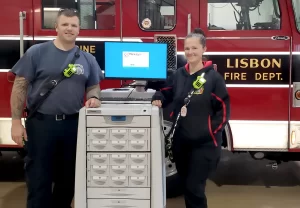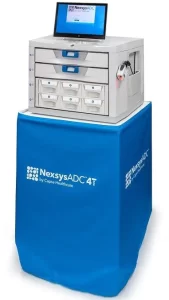Emergency Medical Services (EMS) providers will soon face increased regulatory scrutiny as enforcement begins for specific provisions of the Drug Supply Chain Security Act (DSCSA). This law passed by Congress in 2013 requires independently operated EMS entities to comply with Drug Enforcement Agency (DEA) regulations for securely storing and managing controlled substances.
Beginning in November of 2024, the DEA will enforce compliance with these DSCSA provisions.

That means EMS providers that are not part of a hospital system will be required to order medications directly from a pharmaceutical wholesaler; store, maintain, and track inventory; and account for all administered doses. These regulations apply whether an EMS entity is privately owned or affiliated with a city or county.
Many of the medications commonly used by emergency responders fall under one of the DEA controlled medication schedules and all are covered by the DSCSA. These include:
For EMS operations leaders, these regulations present both a challenge and an opportunity.
Many EMS providers currently use manual medication management practices to track and secure the drugs that are used by emergency personnel on calls. Frequently, on-vehicle medications are packaged in “go-bags” or “tackle boxes” that are swapped out in full at local hospitals. Drugs stored onsite at station houses are often kept in a safe or locked closet and are signed out using paper logs.
Under the DSCSA sections enforced later this year, these approaches will no longer be feasible. EMS providers will be responsible for maintaining their own inventory, which means they need accurate projections of what kind and how much medication they will need to avoid drug shortages or wasted medication. They will also need to account for administered drugs to maintain compliance with the new regulations.
Paper logs are not up to the task for several reasons. Not only are handwritten logs and inventory reports often difficult to read, but they are also difficult to store, organize, and monitor effectively. Paper is also easy to lose and deface. Unfortunately, many logbooks may be one coffee spill away from being rendered useless.
As DSCSA enforcement comes into effect, EMS operations managers have a golden opportunity to upgrade their drug management processes from paper to an agile solution that integrates hardware and software to overcome the frustrations of manual medication management.

Automated Dispensing Cabinets (ADCs) are the ideal solution for complying with the DSCSA provisions that come into enforcement later this year. However, the unique needs of emergency services have often made it difficult for these providers to embrace ADCs.
Capsa’s NexsysADC offers a solution focused on EMS requirements. NexsysADC offers the hardware functionality of traditional ADC solutions but it is the only system that offers purpose-built software designed for emergency services workflows.
NexsysADC dispenses medication to ambulances, rigs, or other emergency vehicles with the associated ride number and reason for dispensing the medication. The software guides the utilization record, serving as a “track and trace” system that shows who is accessing medications, when, and why. After each ride, EMTs log their ambulance and ride IDs and note how dispensed medications were used on the call.
From a hardware standpoint, NexsysADC offers extreme flexibility. Two cabinet sizes are available. The larger cabinet can store over 400 SKUs while the smaller unit has a capacity for 150 SKUs. Cabinets can be expanded with additional units as needed, making the NexsysADC scalable to meet the ever-expanding needs of EMS providers.
An unfortunate consequence of more stringent regulation is that some smaller EMS providers may find it challenging to fit an ADC unit into their budget. This is especially true for volunteer-staffed rescue squads or fire departments.
The NexsysADC solution serves EMS providers large or small. Flexible configurations make it easy to customize a system that meets the community’s needs without compromising affordability. NexsysADC is a practical solution designed to accommodate a mixture of controlled and non-controlled medications and supplies like IV kits. The cabinets have a capacity large enough to store bulk medications as well.
These units are practical, supremely configurable, and available at price points that won’t stretch tight budgets to the breaking point. Financing options are also available to make this solution even more accessible to the EMS providers who need it.
As EMS providers prepare for the upcoming enforcement of DSCSA-mandated regulations, ADCs offer an array of benefits that make compliance much more straightforward. Capsa’s NexsysADC is the only cabinet solution with software workflows engineered with emergency services in mind.